
Why service providers limit downloads via torrents and how traffic management can solve communication problems
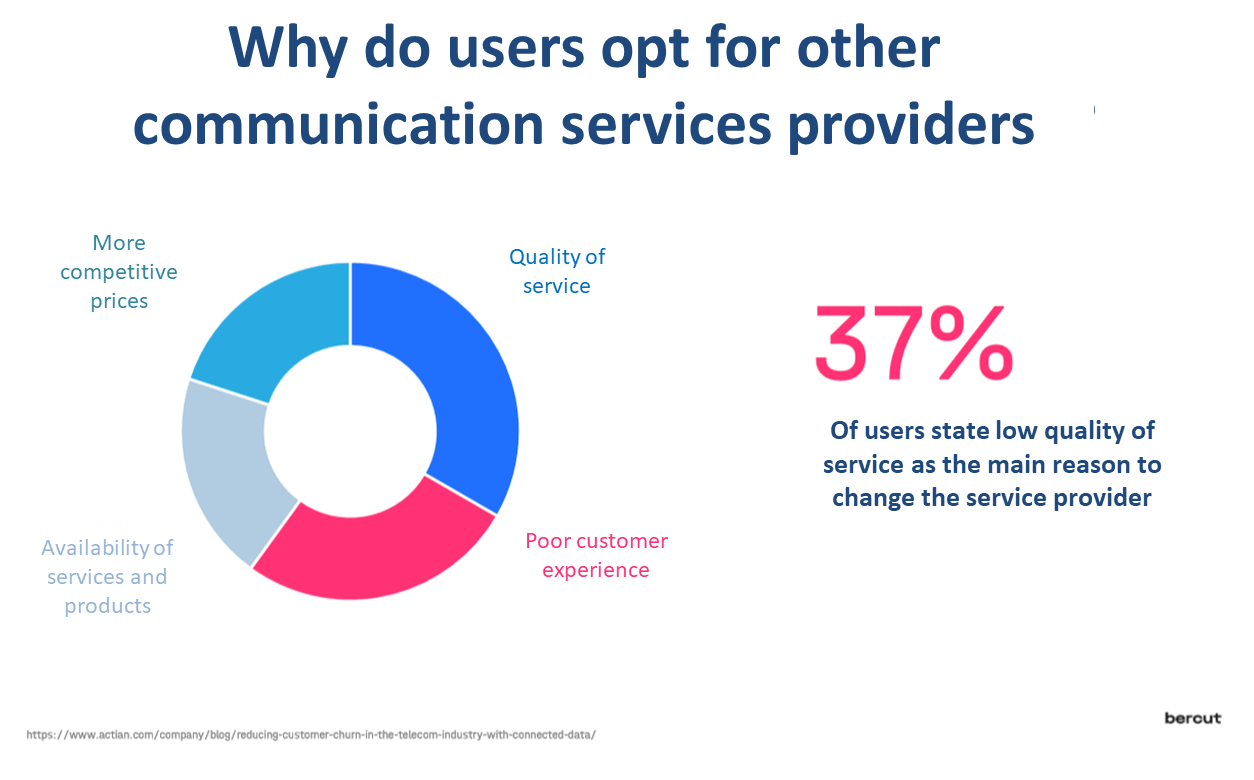
Many users have experienced a common problem with downloading files or running an application despite a rather strong network connection signal. In case service interruptions occur time and again it becomes more comfortable for a user to opt for another provider instead of tolerating the inconvenience.
To solve the problem telecom companies do the following:
- Expand mobile networks.
- Take a more flexible approach to traffic management to improve communication quality by way of special purpose solutions such as Bercut Traffic Management.
The system detects congestion at a particular sector, analyses and characterizes subscribers by type of traffic consumption and redistributes the traffic in real time so that the network is not overloaded. Both solutions can be used simultaneously though the second approach is less costly. Federal telecom providers usually use both options. Regional communications providers do not have that many resources for mobile network development. For this reason, the second option becomes more preferable in terms of cost-effectiveness ratio.
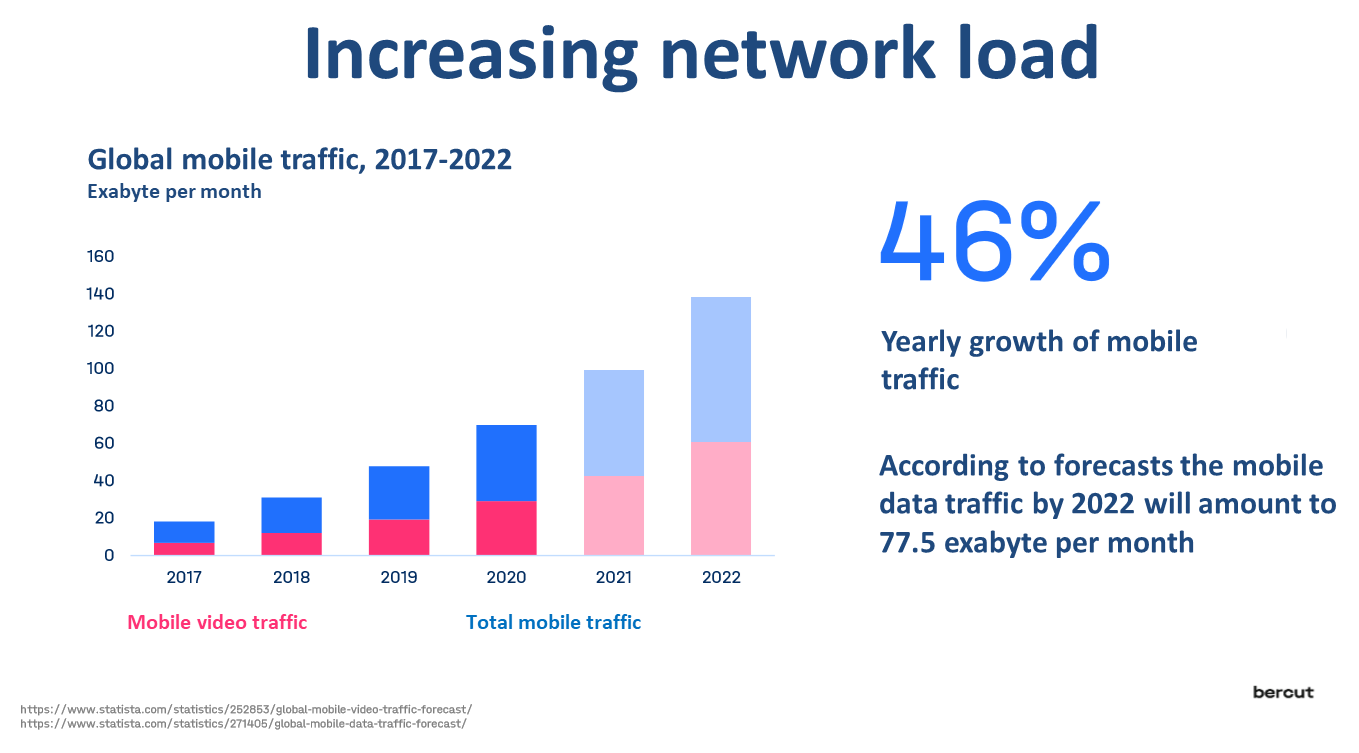
Distribution of mobile traffic
A base station (BS) is used to distribute traffic between users within the range of a cell tower. Any BS has a limited capacity and is designed to serve a certain number of users.
Should there happen to be more users within the working range of a BS than is envisaged by design, “local overloading” occurs. For instance, a base station can provide adequate speed for 100 users. If 300 users gather in one place, they will experience poor performance in terms of data transfer rate.
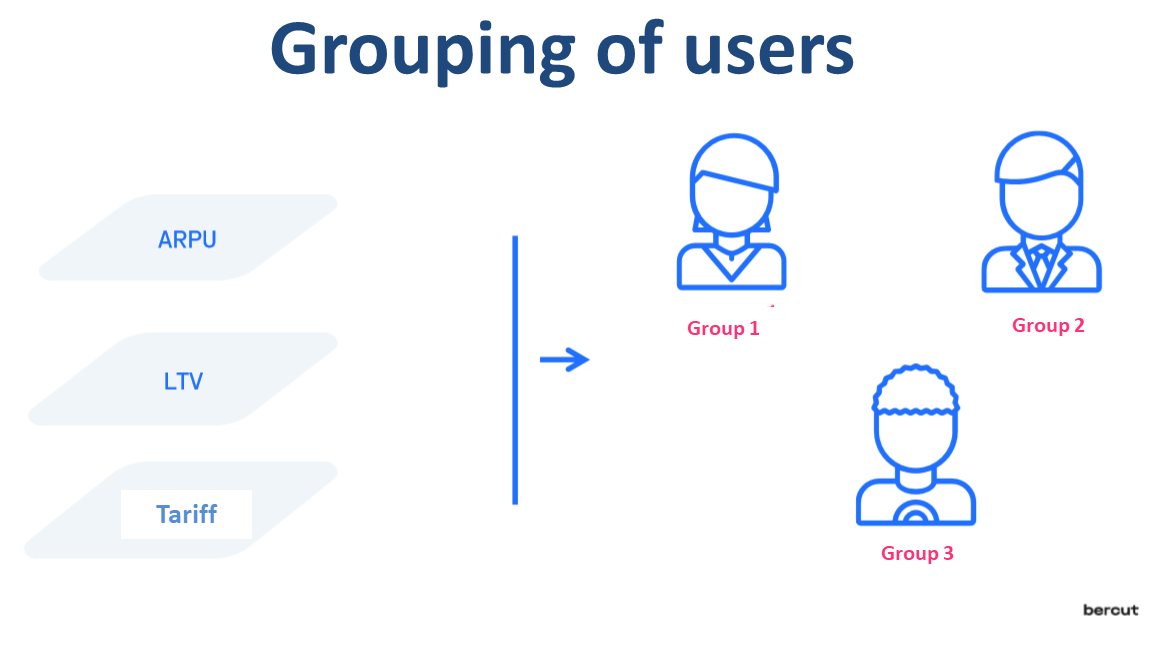
Sometimes one subscriber watching a 4K video on his/her smartphone draws all network resources for his/her own benefit, whereas another user nearby attempts to urgently download something or run a business application.
How service providers solve the problem of providing services to all users
The main problem for many providers is attributed to torrent networks as those consume most resources. In order to prevent network congestion users try to configure their torrent clients so that smaller files were downloaded at a slower speed, and take advantage of home Internet connection for heavy traffic.
Carriers have to provide services to all subscribers, therefore they are pressed to limit torrents. Those users who encounter restrictions when it comes to massive downloads may choose to move to another provider in search of better communication quality. However, this rarely is of any help because traffic limitation is common for all service providers.
In some places overloading is everlasting and network extension is considered the only solution. For example, before the Covid-19 pandemic such issues were often experienced in the city center.
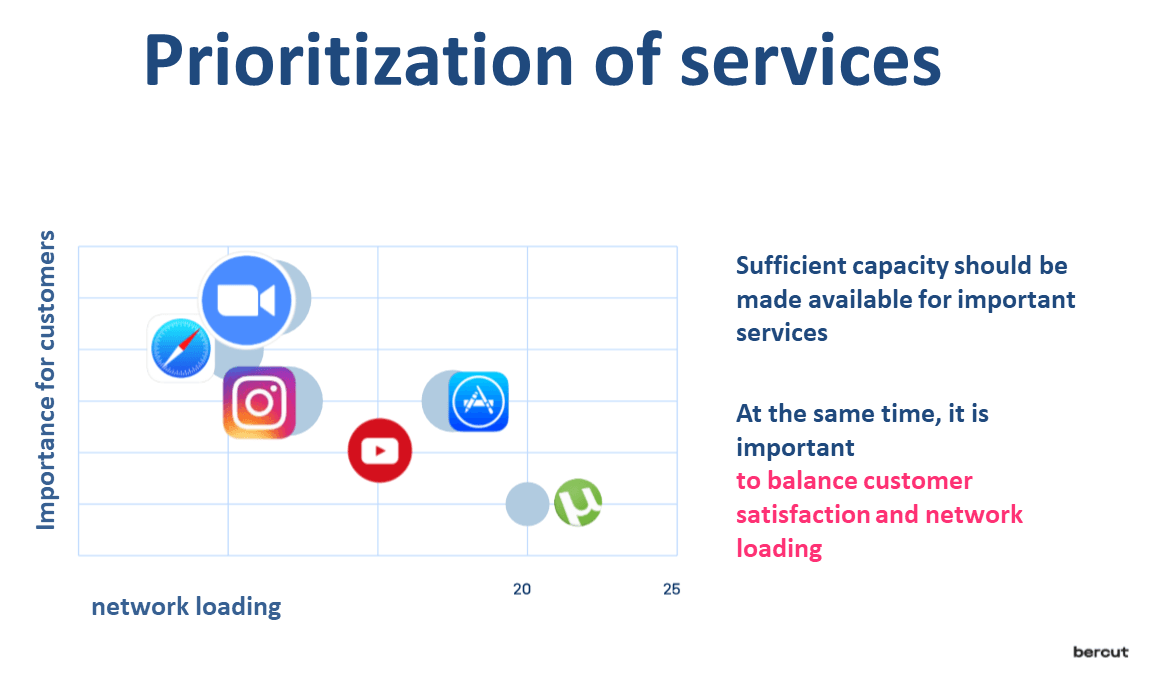
Not to mention scheduled highly populated events like sports venues and festivals. Carriers are usually prepared for such anticipated events and bring additional mobile base stations closer to the place.
Nevertheless, there sometimes happens unexpected network overloading due to emergencies, breakdowns or massive sales in a shopping center that attract lots of people. Many people gather at one place quite unexpectedly and network resources might fail to serve the needs of all.
First of all, the provider can’t predict overloading of this sort and, secondly, it is not able to quickly respond to the problem and direct a mobile base there. A SMART approach to traffic management is useful in such cases.
They say that in the era of 5G connectivity there will be no problems with Internet access, overloading or disruptions. I’d say this is unlikely. The results of statistical analyses by suppliers of hardware for mobile networks, namely Cisco and Ericsson, show that regardless of network capacity the subscribers’ needs grow several times faster. Of course, 5G connectivity has additional capabilities for traffic management but it is essentially aimed at another Internet consumption sector — m2m (machine-to-machine) where devices go online on their own. M2m predominately consumes less traffic but in certain specific instances a minimum delay in data transmission can be afforded. 5G will help to divide data streams better and more comprehensively with different requirements to quality of communication. This technology is known as network slicing. That’s why the primary task of any provider is to balance the needs of various users and the way they influence others will remain even after 5G is in place. That said, 5G connectivity will bring about new perspectives for SMART management.
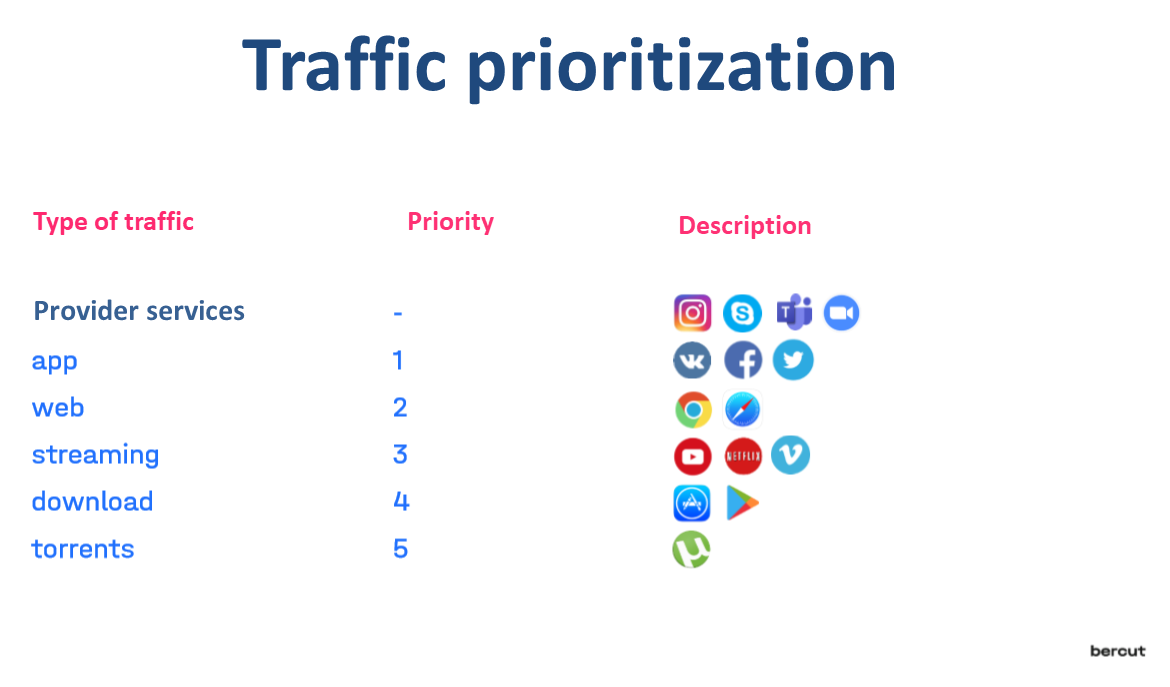
Traffic prioritization solutions
There are several types of suppliers in the traffic management market:
Major network equipment manufactures: Huawei, Nokia, Ericsson
They offer high-grade solutions for traffic management though they are committed to embed them as part of their equipment. As a consequence, the carrier has no other option apart from ordering hardware from them. Not everyone can afford this.
Companies specializing in Policy Control solutions that help with traffic management
These suppliers of special-purpose software for communication providers can work with any equipment. As a rule, this refers to western companies with high prices. They sell package solutions and are not prone to flexible pricing — no matter which options the provider needs, it should buy the full package.
Federal carriers like Tele2 or MTS can bear such costs. Regional providers on the other hand are not of a large scale, they do not have a lot of users and finance as compared to federal companies, and they consider solutions from foreign suppliers to be rather expensive.
They have to address particular network issues and choose a limited but absolutely necessary set of software functions. The Bercut Traffic Management product is designed exactly for such scenarios. The advantage of Traffic Management is a personalized approach to getting the right ratio of costs and effects for business.
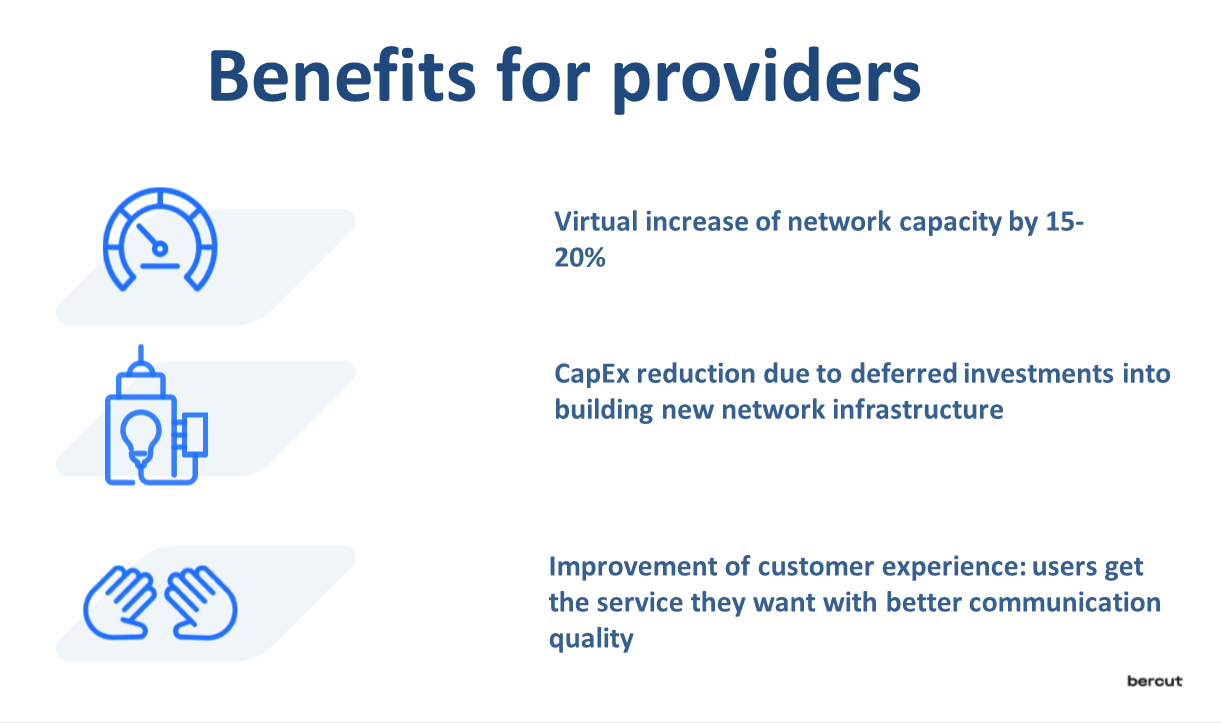
Bercut helps providers to prioritize traffic and makes analytical tools available to form a consumption profile for each individual user. One user, as the case may be, likes watching movies while another one communicates via messengers more often.
Having such information allows the provider to better understand the needs of its subscribers. So, it can on the one hand manage certain types of traffic more accurately and efficiently and on the other hand it can develop personal proposals for various users.
For those users that frequently travel across the country and use navigation applications the provider could offer an unlimited tariff option for navigation software at a moderate extra charge. The personalized approach will enable additional income and inspire customer loyalty.
I frequently hear some experts say that soon carriers will offer individual packages to users instead of standard sets of tariffs. This becomes evident if one traces the evolution of providers’ offers historically during the existence of the mobile networks. At first, users were offered per-minute or per-megabyte payment arrangements; then packaged tariffs emerged, further on there came into being configurable pricing plans for users to choose priority services at their own discretion. The next step is to analyze the type of consumption for all subscribers and offer everyone an individual plan. The solutions from Bercut like Traffic Management are designed to help communication services providers with the development of such personalized products and services for their users.


